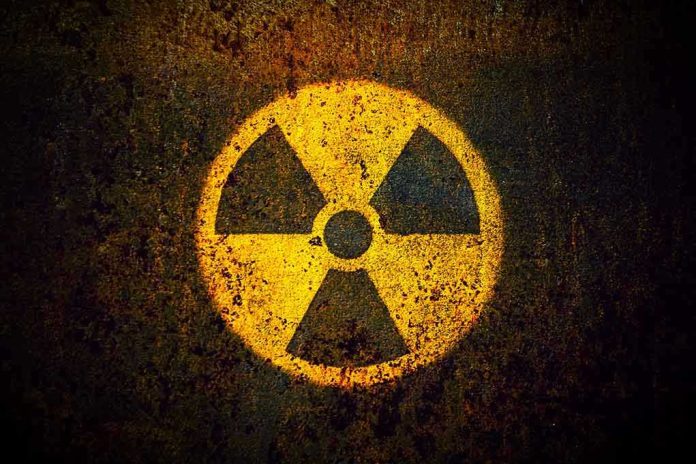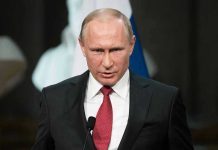
Russian forces transformed the world’s most notorious nuclear disaster site into a weapon of war, cutting power to Chernobyl and creating the unprecedented threat of a second radiological catastrophe.
Story Highlights
- Russian military occupation of Chernobyl severed external power supply, threatening radioactive material release
- Backup generators provided only limited time before potential cooling system failure of spent nuclear fuel
- International Atomic Energy Agency issued emergency warnings about escalating radiation risks
- Power restoration after several days averted immediate disaster but exposed nuclear infrastructure vulnerability
Russian Forces Weaponize Nuclear Disaster Site
Russian forces seized control of the Chernobyl Nuclear Power Plant on February 24, 2022, during their invasion of Ukraine, marking the first time in history that a major nuclear disaster site became a frontline in modern warfare. Ukrainian officials reported on March 9, 2022, that military action had severed all external power supply to the facility, leaving only backup diesel generators to maintain critical safety systems. This reckless disregard for nuclear safety protocols demonstrates the dangerous lengths to which hostile forces will go to achieve strategic objectives, regardless of potential environmental catastrophe.
Critical Infrastructure Under Siege
The Chernobyl site, though decommissioned since the catastrophic 1986 explosion, still houses massive quantities of radioactive waste and spent nuclear fuel requiring constant cooling and monitoring systems. Ukrainian authorities and the International Atomic Energy Agency warned that prolonged power loss could lead to overheating of spent fuel pools, potentially releasing radioactive materials into the atmosphere. The facility’s backup generators could only provide limited emergency power, creating a ticking clock scenario that threatened not only Ukraine but neighboring countries downwind from potential radioactive contamination.
International Emergency Response Mobilized
IAEA Director General Rafael Grossi immediately called for military restraint and urgent power restoration as international nuclear safety experts monitored the deteriorating situation. The agency confirmed no immediate spike in radiation levels but emphasized the escalating risk if cooling systems failed completely. Ukrainian nuclear operator Energoatom coordinated emergency response efforts while local Chernobyl staff courageously maintained operations under Russian occupation, working with limited resources to prevent a radiological disaster that could dwarf the original 1986 incident.
Technical experts noted that while the immediate meltdown risk remained lower than during an active reactor core crisis, the presence of spent fuel presented significant hazards. Nuclear engineers emphasized that decommissioned sites remain vulnerable to external threats, highlighting the need for robust security protocols during conflicts. The incident exposed critical gaps in international agreements protecting nuclear infrastructure during wartime operations.
Power Restored But Precedent Set
Power supply was successfully restored between March 10-14, 2022, averting immediate radiological catastrophe and allowing cooling systems to resume normal operations. However, the incident established a dangerous precedent for targeting nuclear facilities during military conflicts, raising serious concerns about the weaponization of civilian nuclear infrastructure. Security analysts now call for comprehensive international agreements specifically protecting nuclear sites from military action, recognizing that such facilities represent potential weapons of mass destruction when compromised during warfare.
The Chernobyl power crisis underscores the vulnerability of critical infrastructure to hostile military action and the catastrophic consequences that can result from reckless disregard for nuclear safety protocols. While immediate disaster was avoided, the incident serves as a stark reminder that nuclear facilities require absolute protection from military targeting to prevent environmental disasters that transcend national boundaries and threaten global security.
Sources:
Britannica: Chernobyl disaster
World Nuclear Association: Chernobyl Accident
OECD-NEA: Chernobyl Site and Accident Sequence
World Nuclear Association: Chernobyl Sequence of Events
Wikipedia: Chernobyl Nuclear Power Plant














